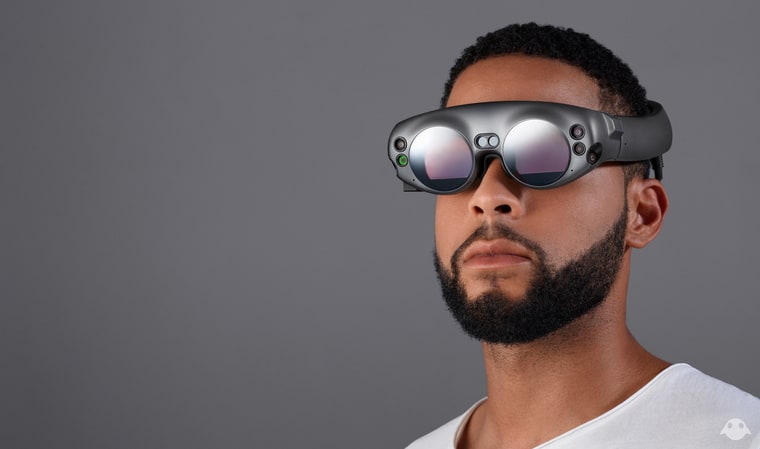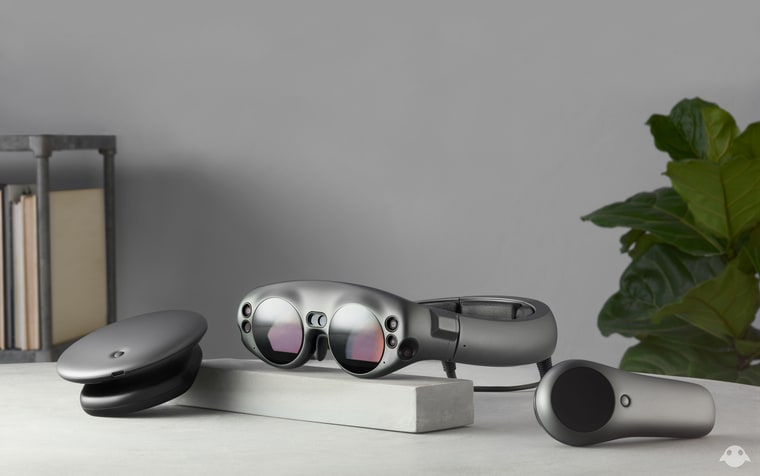Affiliate links on Android Authority may earn us a commission. Learn more.
Magic Leap One mixed reality goggles finally unveiled, "Creator Edition" coming 2018

- Magic Leap has finally revealed its mixed reality platform
- The Magic Leap One “Creator Edition” will launch in 2018 alongside an SDK for developers
- Pricing has yet to be confirmed
Magic Leap has finally pulled back the curtain on its debut product – the Magic Leap One. The Google-backed company says it will begin shipping the “Creator Edition” of its mixed reality glasses in 2018, although pricing and a specific release date have yet to be confirmed.
The ultra-secretive startup has offered brief glimpses of its ‘mixed reality’ technology for years, but up until now, the Florida-based company has kept its work under strict lock and key. That all changed today with the reveal of the Magic Leap One set, which includes a pair of Lightwear goggles, a portable Lightpack computer, and a motion controller that looks a lot like Daydream View’s remote crossed with an HTC Vive wand.
Starting the with Lightwear itself, according to a Glixel report, the futuristic-looking eyewear will come in two sizes, while the unit itself has been engineered to be lightweight and comfortable. As well as several adjustable components around the forehead, nose, and temple, Magic Leap is apparently going as far as taking into account prescription details so it can adapt the lenses for users who wear glasses.
Yet, the impressive comfort options would be nothing without the Lightwear’s array of sensors and optics needed to create a mixed reality experience where augmented reality objects enter the virtual and physical space at the same time.

To achieve this, Lightwear is tethered via two cables to the Lightpack – a circular pad that houses Magic Leap’s spatial computing platform and provides the high-powered processing and graphics needed to effectively blend digital objects with the real world.
The secret behind the Magic Leap One, however, appears to lie in the firm’s Digital Lightfield technology. Magic Leap explains how this works in detail on its website:
“Our lightfield photonics generate digital light at different depths and blend seamlessly with natural light to produce lifelike digital objects that coexist in the real world. This advanced technology allows our brain to naturally process digital objects the same way we do real-world objects, making it comfortable to use for long periods of time.”
This works in conjunction with the myriad sensors – which are still something of a mystery – located on the Lightwear goggles. These sensors are instrumental in the creation of a “digital replica of your physical environment” so that virtual elements can themselves interact with real-world surfaces, objects, and obstacles.

In addition, once this digital map has been created, the Magic Leap One platform will remember exactly where it left any virtual elements for future use. As an example, Magic Leap says that if you summon a virtual TV set and place it in a particular spot, next time you pop on the goggles it’ll be exactly where you left it.
Magic Leap has also confirmed that it will open access to its SDK, as well as documentation and a support system, to developers via a Creator Portal coming in “early 2018.” Some examples of possible applications are listed on the Magic Leap homepage, including 3D spatial web browsing, gaming, and mixed reality conference calls.
After years of hype and very little substance, it’s great to see Magic Leap finally show what it’s been working on ever since Google’s $542 million investment in the company way back in late 2014. Judging by Glixel’s glowing hands-on report, it may have been worth the wait too.
While you can’t buy the Magic Leap One just yet, the company is calling on all interested “designers, developers and creatives” to sign up for updates via a form on its website. What do you think of the Magic Leap One? Let us know in the comments below.